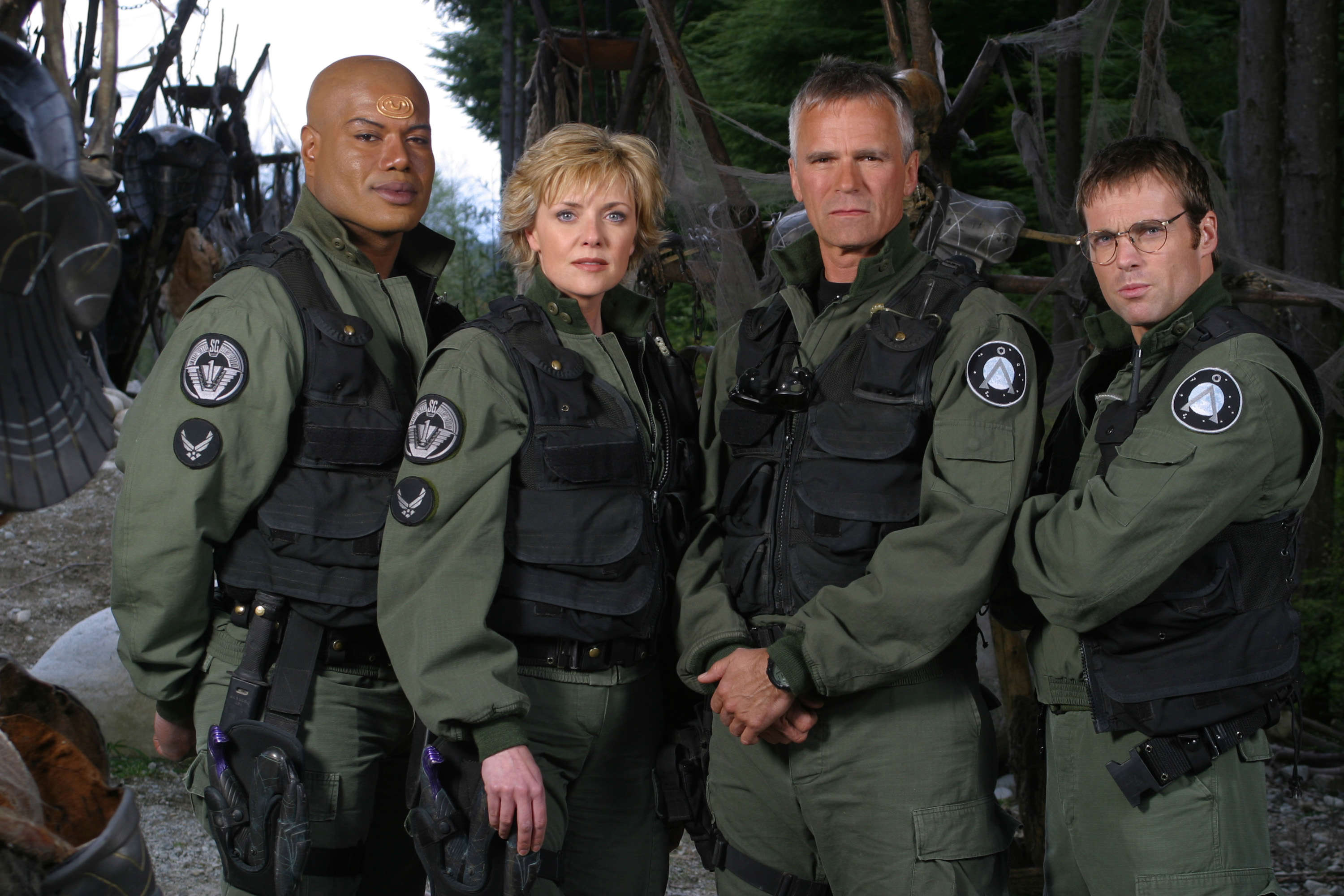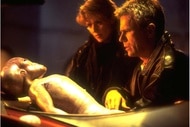Create a free profile to get unlimited access to exclusive videos, sweepstakes, and more!
Casting 'Stargate': How did Richard Dean Anderson & Amanda Tapping end up on 'SG-1'?
Co-creator Jonathan Glassner reflects on early casting for the iconic sci-fi series.

Anytime you land MacGyver for a sci-fi series and manage to keep him around for 10 seasons, you must be doing something right. The fan love for Stargate SG-1 has only grown in the years since the iconic series ended in the mid-2000s, and the show’s early casting wins, filling big shoes from the 1994 movie from director Roland Emmerich that inspired it, is a major part of the reason for SG-1’s enduring popularity as a sci-fi show that still holds up today.
In a recent chat with Dial the Gate’s David Read, series co-creator Jonathan Glassner talked about the unlikely series of early casting decisions that helped Stargate SG-1 populate its beloved ensemble crew, including nabbing Richard Dean Anderson — already a major TV star at the time, thanks to the success of MacGyver — to continue Kurt Russell’s big-screen role as Col. Jack O’Neill.
“I’ve gotta give credit where credit is due: That was [MGM president] John Symes also,” said Glassner. “…He thought we were gonna hate the idea — I don’t know why he thought that! — but he came to [co-creator] Brad [Wright] and I and he said, ‘How would you feel about Richard Dean Anderson playing Jack?’ And both of us immediately said [scoffing] ‘Well yeah! ...Can we afford him?’”
Anderson had a few stipulations about how to approach the role, including giving Jack’s funny side a chance to shine as well as making him part of a true ensemble rather than a full-time leading man. Glassner and Wright ran with those suggestions, and the rest, said Glassner, is history: “He was great. Not just as an actor, but as a person — he was just fun to work with.”
Just about all the series’ major roles were impossibly challenging to fill, thanks in no small part to SG-1’s unique need for actors with chameleon-like abilities to portray a broad range of traits. Glassner said that’s pretty much the story of how the series landed on Amanda Tapping to play brainy and brave astrophysicist Samantha Carter.
“We had read, God, it felt like a thousand women for the part,” said Glassner. “…She was a really hard part to cast because Showtime wanted her to be an attractive woman…But you also have to believe that she’s an astrophysicist; that she’s really smart. She’s gotta have that sense of humor we wanted. She has to have comic timing. And she’s got to have the physical presence to believe that she was trained as a soldier. Those four qualities together, and being a good actor of course, is really hard to find.”
It was Tapping’s comedic talent that jumped out at Glassner and Wright from her casting submission, and bringing her in for a character reading as Samantha instantly sealed the deal, Glassner recalled.
”We got a tape of Amanda doing this comedy show that she was doing in Toronto. And we said ‘Oh, let’s get this woman in!’ And she came in a read for us — and completely nailed the part,” he said, adding that a later “chemistry read” with another cast member only bolstered their faith that she could carry the role. “She was just great,” he said. “I mean, she was just Samantha Carter.”
Of course it all worked out, and probably better than the show’s creators could have dreamed. In addition to spawning a series of spinoff series, a pair of live action movies, and even an animated show (Stargate Infinity), Stargate SG-1 is still making ripples in the space-time continuum as the lore inspiration for an in-development series that could wind up at Amazon Prime set within the SG-1 story canon, if the studio picks it up.
While we wait for any fresh news on a new Stargate project, the show that kicked it all off is still around and ready to stream on the small screen. All 10 seasons of Stargate SG-1 are currently available at Netflix.


























